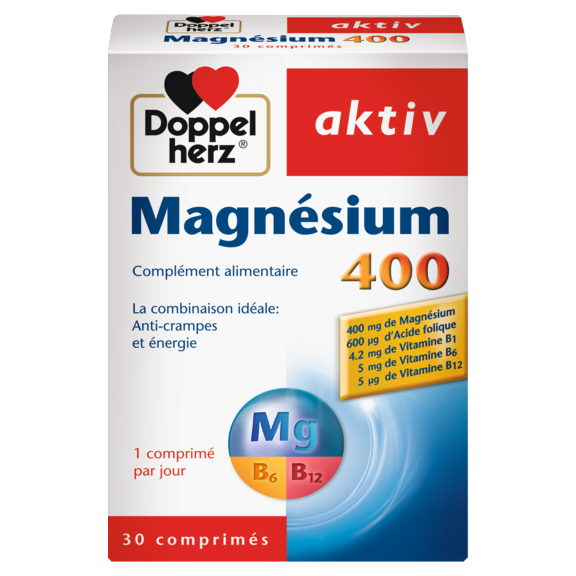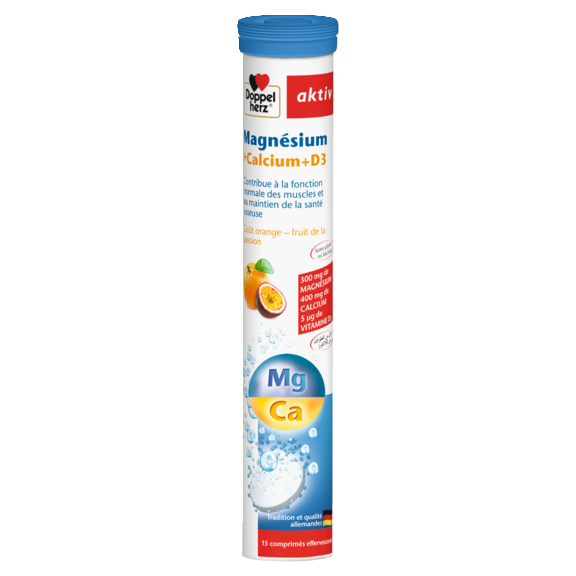Magnesium – the mineral which goes right to the heart
Magnesium (Mg) occurs naturally in the form of compounds, especially in the rock of the Earth’s crust, but also in seawater. Nature owes its green colour to chlorophyll, a complex ring structure with magnesium as its central atom.
The human organism contains about 26 mg of magnesium, the largest share of which – around 60% – is stored in the bones. Some 40% is found in the muscles and organs, and the blood holds only about 1% of the body’s total magnesium content.
Magnesium is important in the body for many enzymatic processes (e.g. the conversion of carbohydrates and fats), for the skeletal muscles, for the stability of the bones, and of course for the heart muscle.
The body consumes magnesium continuously. In certain situations (stress, increased physical exertion, pregnancy, etc), the supply of magnesium can become insufficient. Signs of this can include muscle cramps which occur at night or during sports activities.
Since the body cannot produce magnesium on its own, we have to obtain magnesium from the food we eat. The German Nutrition Society (Deutsche Gesellschaft für Ernährung, or DGE) recommends that adults receive 300-400 mg of magnesium daily. That’s why a well-balanced, magnesium-rich diet is advisable. Whole-grain bread, cheese and pulses have high magnesium content, for example.
Calcium – The “bone builder"
A vitally important mineral for humans, Calcium (Ca) is a member of the group of chemical elements known as the alkaline earth metals.
The calcium content of the human body is about 1000 to 1300 grams in adults (up to 1.7% of body weight). About 99% of the body’s total calcium content is found in the bones and teeth.
Calcium is an essential component of the skeleton and therefore indispensable for bone structure and bone density, as well as for our teeth.
Humans attain their maximum bone density at around 30 years of age. From that point on, healthy people lose about 1% of their bone mineral mass each year.

Unfortunately, however, certain drugs (cortisone) and some food products (e.g. excessive consumption of cola drinks, coffee and alcohol) can also accelerate the removal of calcium from the bones.
One possible consequence is the weakening of the teeth and bone substance.
Foods which are particularly rich in calcium include milk and milk products (cheese, yoghurt, quark, etc) and also egg yolk.
It’s a good idea to ingest magnesium and calcium at the same time!
In the past, simultaneous ingestion of the two minerals magnesium and calcium was generally considered inadvisable because they might adversely affect each other’s absorption into the body.
Those findings were based on, among other things, studies of the isolated rat intestine. New studies on humans, however, have since refuted that earlier opinion.
Magnesium and calcium, in physiological doses, can indeed be absorbed together by healthy humans and well-converted by the body.
Magnesium and calcium are already present in the mother’s breast milk. New research has even shown that the two minerals magnesium and calcium provide excellent support to one another in their positive effects on the body.
You can obtain an adequate supply through a balanced diet or compensate with dietary supplements which exist in various dosage forms (effervescent tablets, pellets, tablets or capsules).

